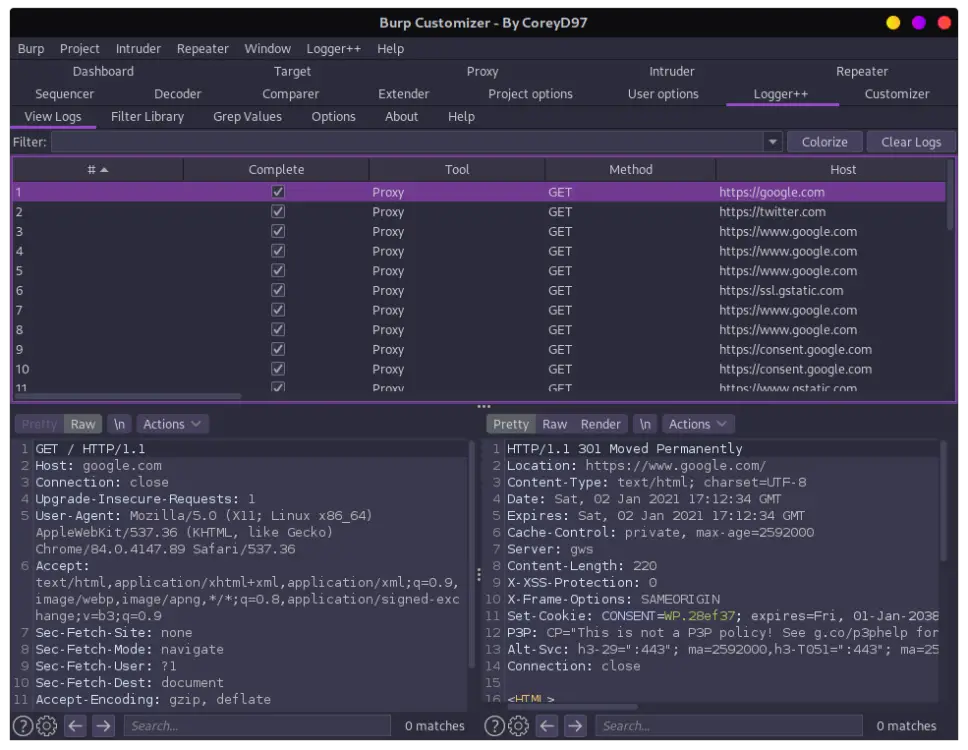
There is an option to change the request methods from GET to POST, and so on. The capture can be dropped, or sent to spider or sequencer or comparer. Going forward in this Burp Suite guide, a range of different steps can be performed from this point on. Burp Suite training tutorial: Part 3 – Sequencer, decoder and composer.Burp Suite Tutorial: Part 2 – Intruder and repeater tools.

The next step in this Burp Suite guide is to set up the browser wherein the request-response process is routed through port 8080 on a local host. Other options such as request type, content type and URL scope in the server responses are available, and can be selected based on the attack scenario. There are various options for intercept setup, including request methods, matching file extensions and URL scope for the client requests. The Burp proxy listener is enabled on Port 8080 of the local host.

Figure 4 and Figure 5 show the required setup to use this feature.įigure 4. For HTTPS we would need to use strippers such as sslstrip, as explained in previous articles.īurp proxy captures the cookie details and HTTP headers of the page. Note that Wikipedia uses HTTP instead of HTTPS, hence the login credentials are captured in clear text. Intercepting login credentials with Burp proxyįigure 3 shows the login credentials of en. being captured. The Drop option allows you to drop the packet if you feel it does not need analysis.įigure 3. The Forward option allows you to send the packets from the source IP to the destination IP. First, switch the intercept mode “on” in the suite. To demonstrate this feature, consider the following example of a Wikipedia login form (dummyuser:dummypassword) as shown in Figure 2. This option works in similar fashion to the man-in-the-middle attack vector. As we move ahead in this Burp Suite guide, we shall learn how to make use of them seamlessly.īurp proxy: Using Burp proxy, one can intercept the traffic between the browser and target application. These include proxy, spider, intruder, repeater, sequencer, decoder and comparer. The various features of Burp Suite are shown in Figure 1. This Burp Suite guide series will help you understand the framework and make use of the features in various scenarios.įigure 1.

Burp Suite helps the penetration tester in the entire testing process from the mapping phase through to identifying vulnerabilities and exploiting them. Burp Suite is an integration of various tools put together for performing security testing of Web applications.


 0 kommentar(er)
0 kommentar(er)
